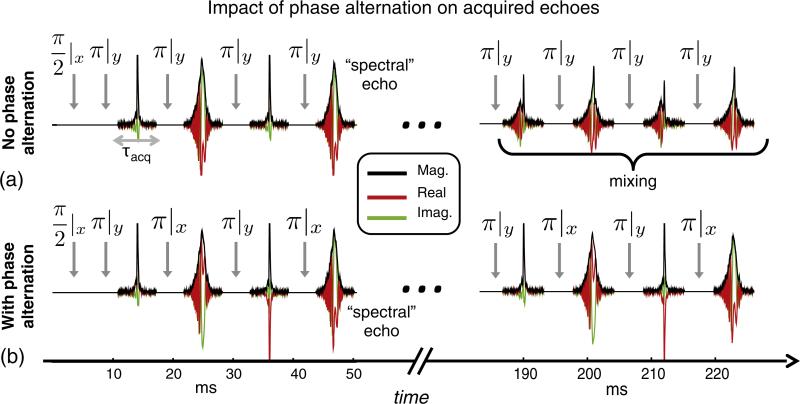Fig. 4.
Spin echo train acquired from bottle phantom in the inhomogeneous B0 field using WURST swept pulses. Since Rref = 2Rexc, the quadratic phase modulation is removed from the first echo. Because the same Rref is used on all refocusing pulses, the quadratic phase is also removed from subsequent odd-numbered echoes. However, even-numbered echoes retain a quadratic phase. This creates “spectral echoes” in which different isochromats refocus at different times depending on where they occur in the frequency sweep. This causes the echo shape to resemble a projection of the object. (a) Without phase alternation all RF refocusing pulses use the same phase (noted in the subscripts). Errors in the refocusing pulse flip angle lead to mixing of the conventional and spectral echoes in later echoes. This renders the data difficult to use with TRASE. (b) With the chosen phase alternation scheme, the refocusing pulse phase alternates between 0° and 90°. This forms two coherence pathways and maintains better separation between the spectral and conventional echoes. To limit spin history effects between TRs, the phase of the excitation pulse, refocusing pulse pairs, and receiver is varied every four TRs as follows: ϕexc = [0,180,90,270], ϕref1 = [90,90,0,0], ϕref2 = [0,0,90,90], ϕacq = [90,270,180,0].

